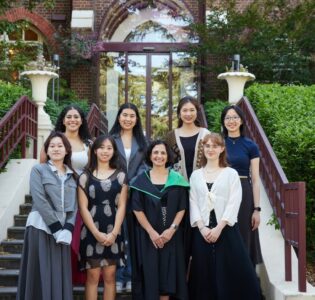Traits of introverted and extroverted learners
13 April 2019
Emily Croagh, Year 11 Genazzano FCJ College, considers general attributes of extroverted and introverted learners and how schools can best support students for learning and life.
In a culture that has come to value so highly attributes relating to showmanship, presentation and collaborative work, one must consider the impact this has on the learning of those not as well suited to these traits.
Traits of Introverted and Extroverted Learners
Speaker and author, Susan Cain, suggests that introverts and extroverts have different preferences when it comes to learning.
For an extroverted student, it can be helpful to study with a greater degree of background stimulation, to help them focus their thoughts and produce their best work. This can manifest itself in the form of background music to clear the head and block out other distractions. It can also be achieved by studying with others, where one has the opportunity to assist their peers and discuss the content, to reinforce the concepts being learnt. Other strategies include changing a customised studying location regularly and introducing game-style approaches to learning (such as time challenges and memory games for memorisation).
On the other hand, a student with introverted tendencies will often work better in an environment with very little external stimuli, where they can allow their thoughts to develop without the hindrance of outside influences and distractions. This can be achieved by minimalizing one’s work space, or studying solo in a library.
What does this mean for the classroom?
Extroverted students also thrive in group tasks, where collaborative and communicative skills come into play, to facilitate discussion and positive action. However, an introverted learner may prefer to work individually, and share their progress in small groups. Both of these skills are important in the modern workplace and should be developed both in a school setting and in the home.
Susan Cain highlights 6 things to know about introverted learners to consider in the classroom. Of particular note is the role of the teacher in recognising how to ensure the introvert students are also heard, and that technology can be a useful tool to facilitate this.
However, it was noted by Dr Carl Jung, the psychologist who first brought these terms into the mainstream, that no one is completely an introvert or an extrovert and everyone exists along the spectrum. In some cases, people display characteristics that are associated with both extremes, and these ambiverts (as they are commonly known) also have to be catered for.
It goes without saying that our education system and indeed our society would greatly benefit from varied approaches taken to productivity and development. As institutions, we must strive to appropriately address the needs of all and maximise efficiency and creative problem solving in our work. In a classroom setting, this translates to the need for teachers to consider varying their lesson plans. Based on a reflection of how their students respond to stimulation, they can adjust accordingly to suit a range of learning needs.
It is also necessary to challenge students to engage in ways that are outside of their comfort zones, to foster an attitude of adaptability and the flexibility to work in a variety of environments. This will better prepare them for a versatile workplace, while also allowing them to explore different ways of learning so that they can find what works best for them. If students have the capacity to fluently adjust their behaviour to suit different contexts, they will surely find success in today’s evolving world.
Emily Croagh
References:




